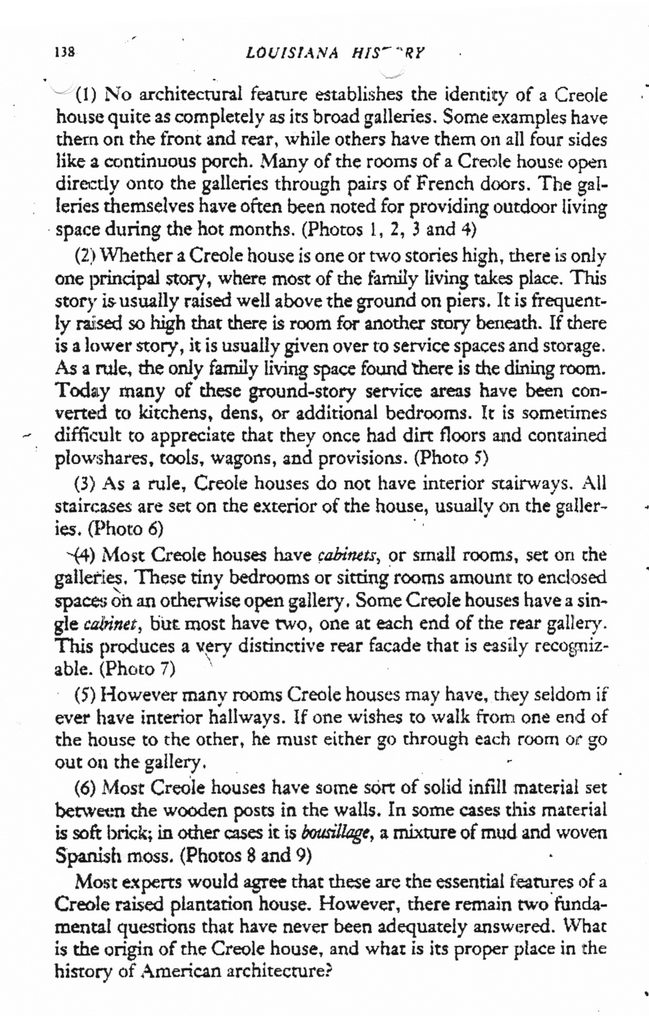This text was obtained via automated optical character recognition.
It has not been edited and may therefore contain several errors.
133 LOUISIANA HIS'' ''RY ^(1) No architectural feature establishes the identity of a Creole house quite as completely as its broad galleries. Some examples have them on the front and rear, while others have them on all four sides like a continuous porch. Many of the rooms of a Creole house open directly onto the galleries through pairs of French doors. The galleries themselves have often been noted for providing outdoor living space during the hot months. (Photos 1, 2, 3 and 4) (2) Whether a Creole house is one or two stories high, there is only one principal story, where most of the family living takes place. This story is usually raised well above the ground on piers. It is frequently raised so high that there is room for another story beneath. If there is a lower story, it is usually given over to service spaces and storage. As a rule, the only family living space found there is the dining room. Today many of these ground-story service areas have been converted to kitchens, dens, or additional bedrooms. It is sometimes difficult to appreciate that they once had dirt floors and contained plowshares, tools, wagons, and provisions. (Photo 5) (3) As a rule, Creole houses do not have interior stairways. All staircases are set on the exterior of the house, usually on the galleries. (Photo 6) ^4) Most Creole houses have cabinets, or small rooms, set on the galleries. These tiny bedrooms or sitting rooms amount to enclosed spaces oh an otherwise open gallery. Some Creole houses have a single cabinet, but most have two, one at each end of the rear gallery. This produces a very distinctive rear facade that is easily recognizable. (Photo 7) (5) However many rooms Creole houses may have, they seldom if ever have interior hallways. If one wishes to walk from one end of the house to the other, he must either go through each room or go out ou the gallery. (6) Most Creole houses have some sort of solid infill material set between the wooden posts in the walls. In some cases this material is soft brick; in other cases it is bwsillage, a mixture of mud and woven Spanish moss. (Photos 8 and 9) Most experts would agree that these are the essential features of a Creole raised plantation house. However, there remain two fundamental questions that have never been adequately answered. What is the origin of the Creole house, and what is its proper place in the history of American architecture?

Onward Oaks Origins of the Creole Raised Plantation House (2)